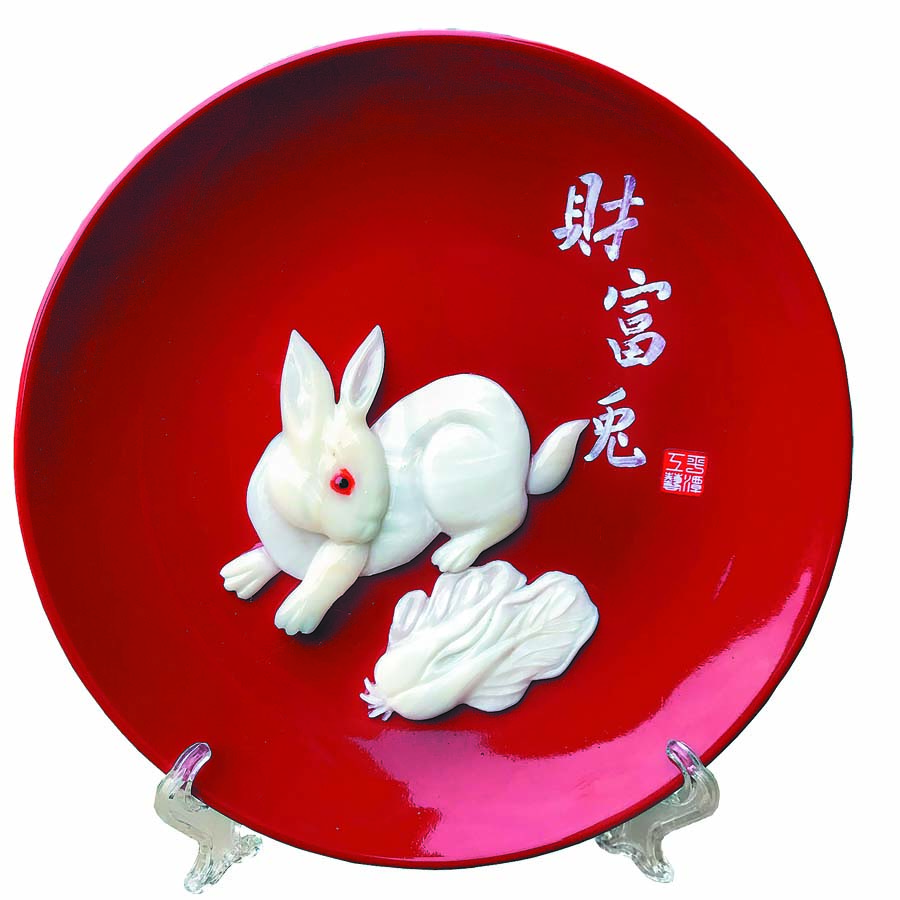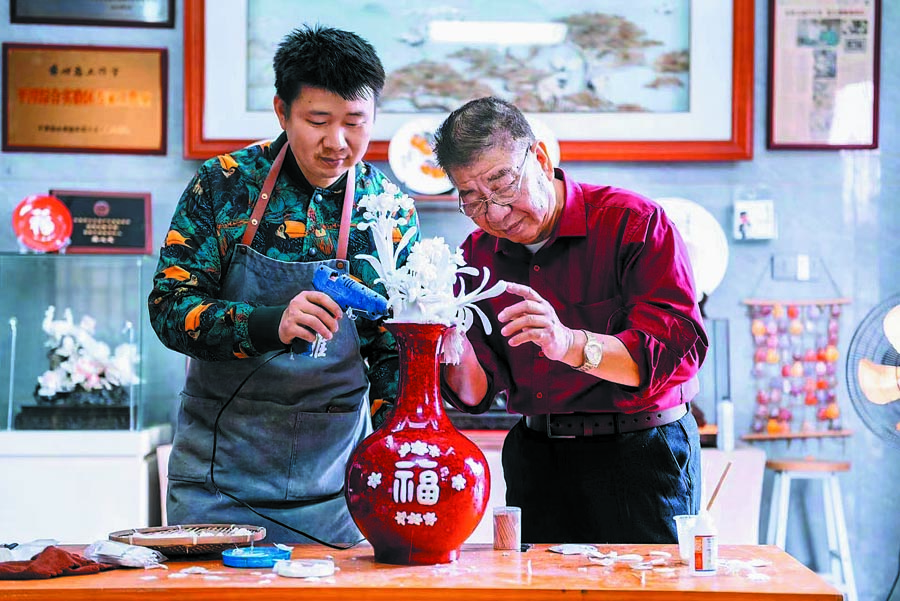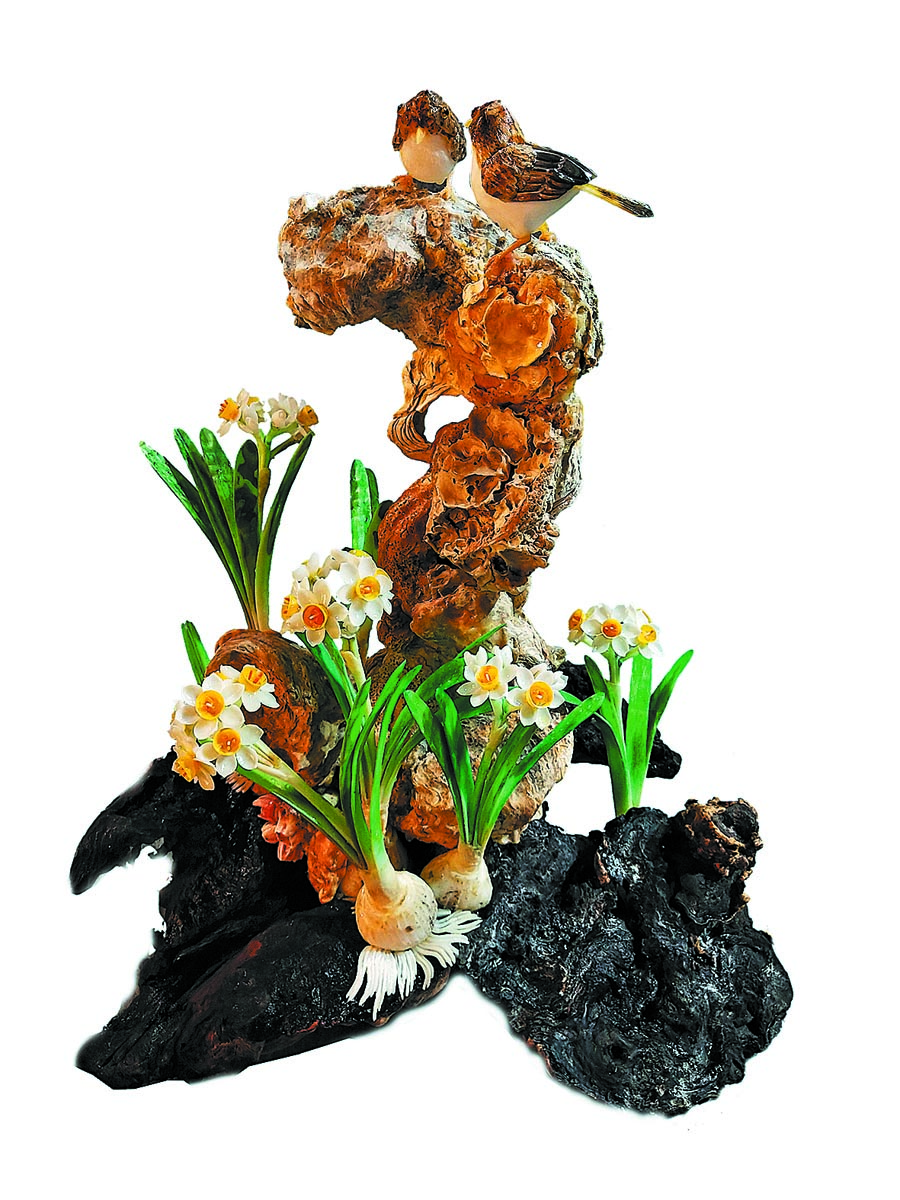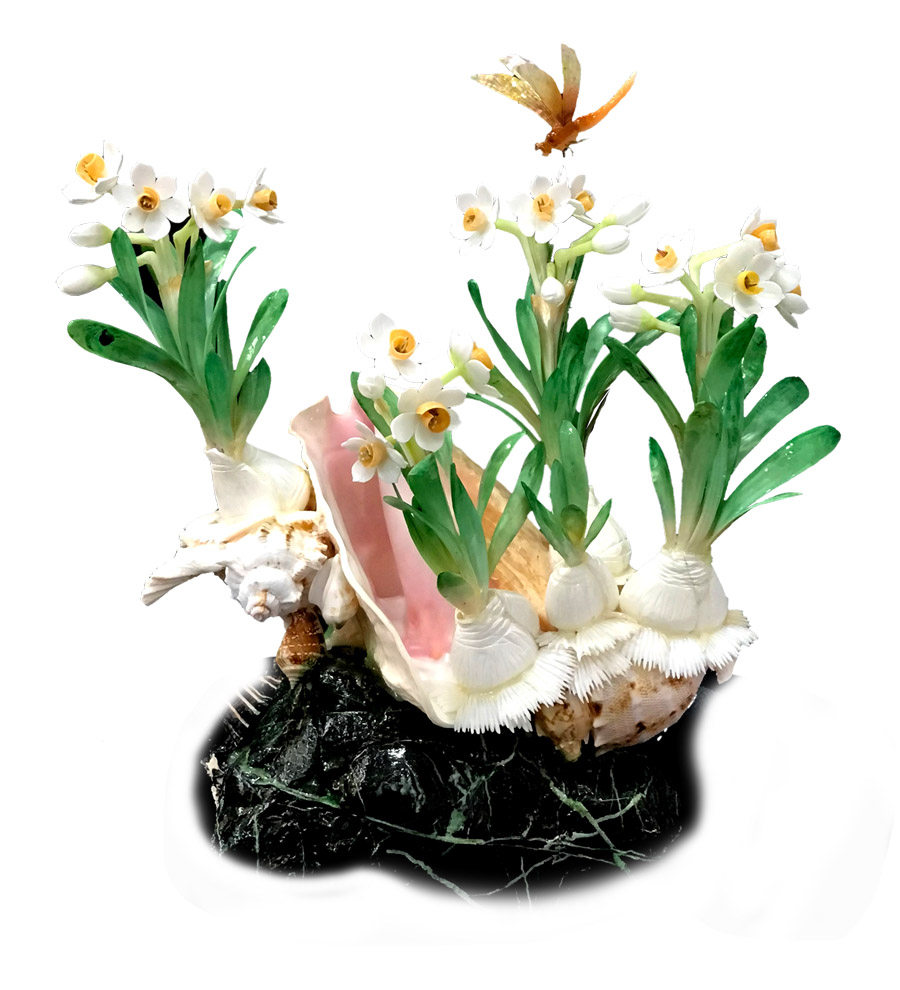Shelling out

Artists turn ordinary shells into coveted artworks featuring various elements, such as birds, flowers and rabbits.
Artisans carry forward the old craft of carving on the fragile gift from the ocean, report Yang Feiyue and Hu Meidong in Fuzhou.
As products of nature, shells have developed a bond with people since the days of yore. The connections can be traced to the period of cave people whose images show them wearing shells.
During the Qin (221-206 BC) and Han (206 BC-AD 220) dynasties, shells were carved with simple patterns of birds and animals or inlaid as ornaments on a wide range of objects, such as bronze vessels, mirrors, screens, tables and chairs.
Today, in East China's Fujian province, a group of artisans are committed to carrying forward the ancient craft.
Jiang Xinzhong has carried forward the traditional techniques of shell carving and turned ordinary shells into coveted artworks of modern taste. In the depths of winter in late December, Jiang and his two apprentices buried their heads in a pile of miscellaneous sea shells amid mechanical noises. It took them three days to make an artwork of a Taiwan landscape through sculpting and changing shells of various shapes and sizes at a workshop in Pingtan county in Fujian.
"I used red small conches, white scallops and razor clam shells to outline the stretched and beautiful coastline, and green conches to represent the island's central mountain range, which runs north to south," Jiang says.

Jiang Xinzhong (right) and his apprentice Zhou Ming work on an intricate shell carving, featuring a vase, flowers and an auspicious Chinese character fu (good fortune), at an art museum in Pingtan, Fujian province.
For approximately six decades, the man in his late 70s has engaged in the local craft of shell carving, which boasts a profound history that dates back to thousands of years ago.
Archaeologists found shell accessories at the Keqiutou ruins, a Neolithic site, in Pingtan, in the 1980s.
The shell carving's beauty is a bounty of nature, as Pingtan is surrounded by the sea and enjoys a temperate subtropical climate, both of which have granted the county rich resources such as shellfish, conches and clams of different shapes and colors.
Local artisans have turned the natural gifts into shell-carved paintings in relief and various practical handicrafts since the 1950s, after integrating techniques from jade and wood carving, mother-of-pearl inlay, as well as traditional Chinese painting. It has opened a new page in the history of shell carving.
Known for its three-dimensional, delicate and practical features, Pingtan shell carving has evolved into more than 200 varieties in five categories, such as shell-stacked paintings, 3D round carvings, shell-inlaid lacquerware and shell-carved flower receptacles.
Jiang got enamored with the traditional craft in 1955 at the age of 12, when his art teacher Lin Guoqin led the class to pick up shells on a beach and had the students clean, polish and paste them into delicate artworks.
In particular, one artwork featuring Taiwan elements and made up of thousands of shells won compliments from the central government.
"It was very exciting," Jiang recalls.

Artists turn ordinary shells into coveted artworks featuring various elements, such as birds, flowers and rabbits.
Four years later, Jiang made his way to the county's first State-owned shell carving plant, where he worked his way up from an apprentice to technical head and deputy plant director over the course of 40 years.
"Shell carving is different from jade, ivory or stone carving, and has a unique making method," Jiang says.
A shell carving often requires intense manual labor. A shell painting that is dozens of kilograms can consume 1 or 2 metric tons of raw material and takes two or three months of fine carving. A novice would need to spend a couple of months getting familiarized with the varieties of sea shells and how to select them.
"Most of the time, shells with smooth surfaces, bright colors and specific shapes are preferred," Jiang explains.
After that they are immersed in chemical solutions to get rid of the odor and impurities, before being cleansed and dried. Then, comes the design on paper, which includes an overall plan and paper patterns that are stuck to shells as references for the processing.
"One has to take advantage of every shell's shape and luster before collaging, polishing and carving," Jiang says.
Local artisans have ingeniously turned spotted shells into lifelike tree trunks and those with lines into hair buns.
"The collaging and carving is repeated to deliver different artistic effects," he adds.
In 2021, to celebrate the 100th anniversary of the Communist Party of China, Jiang sculpted red scallops into a model replicating the main body of the red boat on Nanhu Lake in Jiaxing, Zhejiang province, where the first National Congress of the Communist Party of China was concluded. The dark gray clam shells were used to look like buildings on the lake's banks, where trees and grass were fashioned out of shells with a tint of green.

Artists turn ordinary shells into coveted artworks featuring various elements, such as birds, flowers and rabbits.
As some parts of shells are fragile and hard to be carved, every step is crucial and needs a lot of practice, Jiang says.
Pingtan's shell carving made its presence felt abroad in the 1970s and '80s, with related products making their way to more than 40 countries and regions.
However, the market economy reform and business restructuring at the beginning of the 1990s dealt a blow to the Pingtan shell plant, which was eventually shut down in 1999.
Yet, Jiang didn't give up on the trade and has spent spare time practicing and honing his skills.
"Ever since I got in touch with it, I haven't thought of dropping it," Jiang says.
Years of practice has rendered him a personal style, including color combination and sculpting methods.
He's especially good at relief and circular engraving skills. In particular, the circular engraving enables viewers to see vivid images from different angles.
"It is extremely difficult and requires a shell sculptor to carve in multiple directions," says Zhou Ming, Jiang's apprentice.
"There are very few artisans who have inherited the art of circular engraving in shell carving, which requires artistic creation and years of experience," Zhou adds.
Zhan Lixin, head of the Pingtan shell carving art research institute, says the plant's failure was caused by a lack of innovation, with monotonous elements of mountains, birds and flowers. A few senior craftsmen opened private plants later, but soon disappeared as a result of high labor costs brought by the complex shell carving procedure.
The craft has been very close to Zhan's heart after he visited the local shell plant in his childhood in the late 1960s.
"I stumbled upon a shell-carved work in 1998 and I couldn't keep my hands off it," Zhan says.
Since then, he and his brother, Zhan Sheng, have collected more than 1,000 shell-carved works.
In 2012, Zhan Lixin visited coastal areas in East China's Zhejiang and Jiangsu provinces and found Pingtan shell carving had its distinctive characteristics and value.
"I wanted to restore the shell carving industrial chain, step by step," Zhan Lixin says.
He then approached veteran craftsmen, including Jiang, to come up with a series of new shell carving artworks. Their efforts paid off, as the works gained popularity on the market. In 2015, the related revenue reached 1 million yuan ($147,400).
As the Pingtan international tourism island has taken shape, local shell carving has been given more exposure. Related works have frequently been on display at various cultural and tourism expos.
In 2019, Pingtan shell carving was named a provincial intangible cultural heritage in Fujian. To date, there are more than 20 shell carving selling stores near popular scenic spots in the province.
Zhan Lixin's says shell carving has to meet modern aesthetic standards and get support from senior artisans and the authorities to enjoy a comeback.
"Now is the right time," he says.
"The increasingly prosperous tourism market has given new opportunities to the re-emergence of Pingtan shell carving, and the government is supportive of its development of Pingtan shell carving, both of which undoubtedly create a good environment for the industry to thrive," he adds.
In 2021, Jiang and his disciple, Zhou Ming, established a shell carving art museum, where Jiang has explored ways of publicizing the craft's history and techniques.
"I got involved with shell carving when I was in primary school, and now I want to pass this skill to the next generation to cultivate their interest from a young age," Jiang says. "I hope to plant the seeds for the inheritance of Pingtan shell carving."